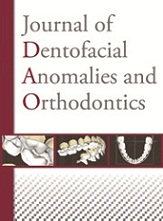No CrossRef data available.
Article contents
Patients with extensive esthetic enhancement requests. Some tips for finishing and detailing
Published online by Cambridge University Press: 14 March 2013
Abstract
Faced with a patient who has extensive esthetic enhancement demands, simply aligning the teeth and achieving a functional occlusion might not suffice.
The goal of this article is to help orthodontists to analyze and to optimize the positioning of upper anterior teeth so as to improve the esthetics of the smile.
Of course, esthetics is not an objective notion. Therefore, maintaining good communication with our patients is essential. Nonetheless, esthetic rules as they are defined in the literature will serve as a “framework” for creating a smile.
In this context, the orthodontist will have to take into account the shape of the teeth, particularly since not all shapes are ideal. In fact, the incisors have three main shapes: rectangular, triangular and ovoid. The shape of the teeth will perhaps guide orthodontists in their choice of treatment. Opting for stripping will be the preferred treatment in some cases.
Similarly, orthodontists have to take into consideration incisal edge defects caused by wear associated with the initial malocclusion that becomes more apparent after alignment. In some cases, a simple recontouring or enameloplasty of the incisal edges will be sufficient and should be discussed with the patient before it is performed using a simple and reliable procedure.
- Type
- Research Article
- Information
- Copyright
- © RODF / EDP Sciences




